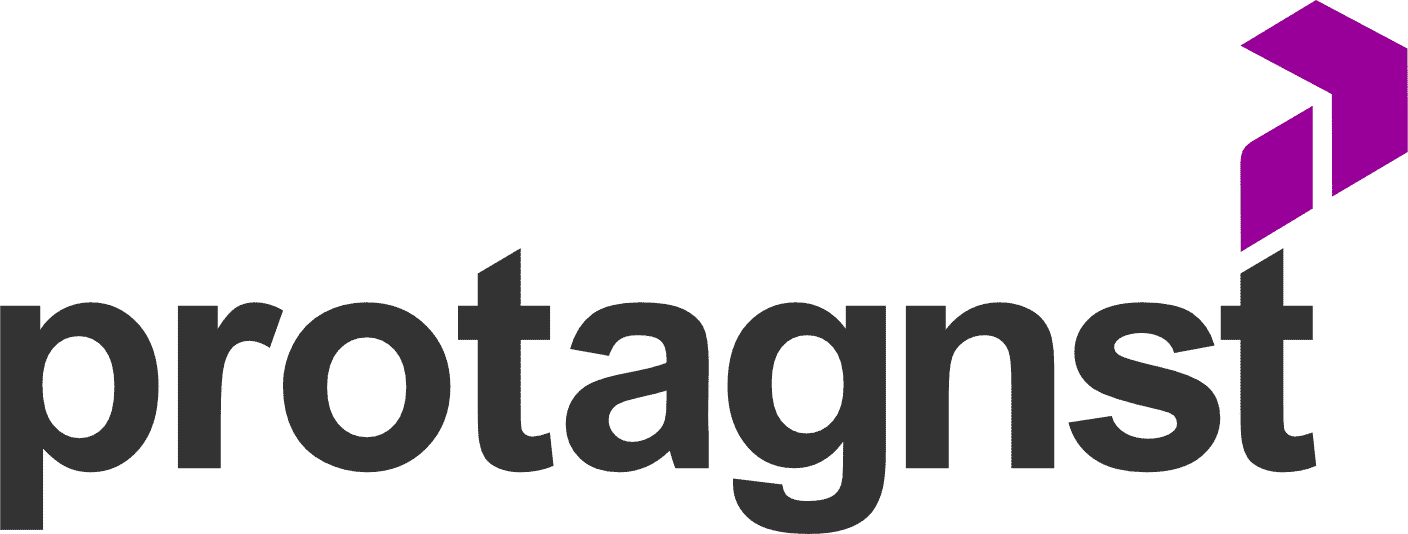Lead, leads, lid, lides, leed. The spelling varies, but the essence is the same: potential clients.
Maintaining a healthy business environment involves many factors. There are external ones, like the overall state of the economy, which are often beyond our control—and the pandemic is proof of that. But there are also internal factors, which depend above all on good management and strategy.
This is what guarantees that the bills are paid and ensures sustainable growth. In this sense, keeping clients is essential, and identifying new leads is always a goal. But do you know what leads are? And what are qualified leads? Or B2B leads?
Throughout this article, we’ll explain what leads are and the importance of knowing how to work with them effectively. But first, let’s summarize: they are potential clients. And now you know why a deep understanding of the meaning of “leads” will make all the difference in turning them into loyal customers.
In fact, the search for new clients is what drives any business that intends to expand. This is true for direct sales, but it’s especially important in the Business to Business (B2B) environment.
Transactions in these cases tend to be lengthier and longer-lasting. And those involved in them know that days or even months of negotiations don’t always result in what was expected.
That’s why seeking new B2B leads or prospecting for new clients is so important. While this enables company growth, it also ensures its stability.
The search for new leads and prospects can be done in several ways. It can happen through your own team or with the help of specialized companies like Protagnst. If you want to learn more about our services, fill out the form at the end of this article, and we’ll get in touch.
But for now, how about delving into the importance of leads? Let’s go!
Mapa do Conteúdo:
ToggleTable of Contents
-
- What is a lead?
- Is every visitor a lead?
- Sales Funnel
- What are the types of leads?
- Suspect
- Qualified Lead
- MQL (Marketing Qualified Lead)
- SAL (Sales Accepted Lead)
- SQL (Sales Qualified Lead)
- Prospecting
- Why generate leads?
- And how to generate leads?
- The importance of nurturing leads
What is a lead?
In the world of marketing and business, the straightforward meaning of “leads” is potential clients. It’s a person (or company) who has somehow shown interest in your product or service.
This show of interest can manifest in various ways. It could be, for example, an ebook downloaded from your website, an email address or phone number they provided, interest in your newsletter, or, more effectively, a request for a quote.
By taking any of these actions, the visitor has shown that your product or service is what they’re looking for. So, it’s worth building a relationship to try and convert them into a paying customer.
The concept of a lead is relatively old, but it has gained even more traction in recent years with the growth of digital marketing—and especially inbound marketing.
This is a model where potential clients come to your product or service organically, rather than through traditional advertising—or interruption marketing. So, often they don’t even know they need your product or service. But they end up discovering it.
That’s precisely why leads deserve full attention. After all, they’ve already presented themselves as a potential client, but they still have a way to go before deciding to do business with you.
In outbound marketing, a lead is a potential client who has responded to an email or a call, connected with you on LinkedIn, or who has a real chance of closing a deal with your company.
When we talk about qualified B2B leads, we’re usually referring to individuals holding certain positions in companies that have a real chance of becoming a client.
In outbound, the road is long, as you’re going after a client who often doesn’t have, or doesn’t know they have, a specific pain point or problem that you solve. They often don’t even have a purchase intention and need to be convinced that, in the end, your product or service is the best option.
This journey can be represented by what’s commonly called a sales funnel, a model that divides the buying process into stages. We’ll show you how it works later on.

Back to Top
Is every visitor a lead?
No, but it’s important to at least treat them as such.
This is because, while every website visitor could potentially become a client, it doesn’t always happen. It depends a lot on why they’re there.
Sometimes, someone might be directed to your website by a search engine or a hyperlink simply because they’re researching a topic—a journalist, student, or professor, for example.
It could also be someone looking for a job at your company, or, conversely, someone from the competition trying to get a better understanding of your prices and strategies.
As you can see, in none of these cases is the visitor a lead.
A visitor, on the other hand, is a lead or becomes one from the moment they take some action that demonstrates a possible interest in purchasing your product or service.
Imagine, for example, a news portal that blocks most of its content with a paywall—that screen that prevents you from viewing content without subscribing.
These portals usually allow visitors to access a limited amount of articles by simply registering. And whenever someone registers, they’re demonstrating a desire to access the offered content. Therefore, this visitor is a lead.
However, for the portal to qualify this lead and, later, convert them into a subscriber, it needs to ensure that this visitor advances in their buying journey. This is easier if the company guides them, providing compelling reasons to subscribe.
Back to Top
Sales Funnel
Lead qualification is closely tied to something you’ve likely heard of: the famous sales funnel.
It’s a strategic model visually representing the entire buying journey of a potential client—our lead—up to the actual closing of the deal.
Several sales funnel models differ in nuances, details, or even terminology—in this case, considering different marketing strategies.
However, at its core, the sales funnel representation is divided into four stages.
Attract
Here we are at the top of the funnel.
This is the stage where a new audience discovers your company.
Visitors are finding out what you offer, so your marketing team needs to help and make them aware of your solutions. Visitors must understand that you have something that can solve their problems or fulfill their needs.
This can be done through blog and social media posts, content creation, offering free ebooks, and more.
In outbound, when you proactively reach out to clients, this stage boils down to the active search for clients. It’s the prospecting strategy (identifying potential clients), coupled with the initial approach to try and make the first sales contact.
In this first contact, the main goal isn’t to sell anything. You are here to pique interest, qualify the lead, and schedule a follow-up meeting. At no point should you attempt an impromptu sale via email, WhatsApp, or phone.
Scheduled meetings will have a set date and follow your sales process. If you’d like to hire an inside sales consultancy, you can count on Protagnst to help structure this process.
Convert
The visitor’s buying journey is beginning, and you need to guide them down to the next stage of the funnel. This is the moment for lead prospecting.
Your visitor has realized they need something and that you might have exactly what they’re looking for.
To show them that you have what they need, you should send them relevant materials. At this stage, your marketing team should offer forms, landing pages, or other ways to ensure contact.
In outbound sales, the conversion stage is a bit longer and includes at least one additional step: closing and clarifying doubts.
Sending a proposal is essentially the outbound equivalent of the inbound conversion stage. It’s crucial to do this.
Close
We’re at the bottom of the funnel, but your lead hasn’t become a customer yet. You need to convince them that you have what they need and can offer it in the best way possible.
So, start building a relationship. Offer specific content, understand their needs, answer their questions, overcome objections. Show them how you can help.
This is where you address all possible lead objections and guide them to make the best decision, which in this case would be to hire your company.
At this stage, you’ll also negotiate delivery timelines, payment methods, and even discounts if these are dealbreakers.
Delight
You’ve already established trust and guided your lead to the final stage of the funnel. Now is the time when the potential client is persuaded and decides to purchase what you’re selling.
However, to achieve this, you need to delight them. Make a compelling offer, considering future dealings. In other words, more than just closing a deal, ensure this customer becomes a repeat customer.

Back to Top
What are the types of leads?
Though we generically refer to them as “leads,” there are various types. After all, a potential customer can be in different stages.
For example, someone might come to your company actively looking for a solution to a problem. In this case, they may be interested in a quote. In short, they’re looking for a deal. It’s your job to convert this lead into a transaction.
On the other hand, a visitor might come to your website simply because they clicked a link somewhere else or because they’re researching a particular topic.
Notice that in this case, they’re interested in what you offer, but not necessarily ready to spend money on it right now. It’s your job to capture their interest.
In summary, both are leads, but at different stages.
Below, we’ll present the different types of leads and their characteristics. Knowing how to identify and interact with them correctly can make all the difference.
Suspect
As the name suggests, you “suspect” they might be a lead, but you don’t have confirmation yet. Initially, they could be just a visitor.
This is someone who visits your website, blog, or social media and signs up for your newsletter. It could also be someone who watches your live stream, attends a webinar, or window shops and decides to step inside for a closer look.
Note that by doing any of these things, they’ve shown at least some interest. Something caught their attention, so they should be seen as a potential client.
But often, suspects aren’t in a position to buy your product or service right away, or they came to you out of mere curiosity. They’re not ready or simply don’t want to do business with you yet.
Still, suspects should be treated with care, as there’s always the possibility they’ll become a client in the future.
Qualified Lead. So, what are qualified leads?
There’s no perfect definition for qualified leads, as it depends on the criteria each company uses. In general, to define what is and isn’t qualified, you need to understand what your ideal customer profile is and who genuinely has the pain point that your solution addresses.
Also known as a Qualified Lead (or simply QL). This is someone who fits the famous “Ideal Customer Profile,” also known as ICP.
A quick side note:
The ICP is the customer your company considers the most promising: they understand your product and its value. Therefore, they’re highly likely to be repeat customers.
So, whenever your lead matches the Ideal Customer Profile, they’re considered a qualified lead. This person is primed to move through your sales pipeline. It’s crucial to provide the means to ensure this happens.
Let’s look at some examples of qualified leads. For Protagnst, a qualified lead is a CEO, Director, Manager, Partner, Founder, or Coordinator of a company that sells B2B and needs to generate more qualified leads for their sales process.
If the company is B2C, for instance, that’s not our ideal customer profile, and the lead isn’t as qualified. While we can still help the company, our prospecting methodology is geared towards corporate clients who sell to other businesses.
It’s the responsibility of the pre-sales area and the SDRs (Sales Development Representatives) or BDRs (Business Development Representatives) to make initial contact with potential buyer companies.
MQL (Marketing Qualified Lead)
The Marketing Qualified Lead, like the qualified lead, is still at the top of our sales funnel.
They resemble the previous type, but the difference is they’ve only realized they need your product or service because your company showed them. In other words, your team has done part of the job well. Now, it’s time to follow up and guide your lead towards the bottom of the sales funnel.
The potential customer has changed status because the right strategies for generating qualified leads were used. This includes social media interactions or accessing your content via CTAs, for example. We’ll explain the main strategies later.

SAL (Sales Accepted Lead)
The Sales Accepted Lead (SAL) has all the characteristics of a qualified lead. However, they still need to be “accepted” by the sales team.
You might be thinking: if they already fit the ideal customer profile, why would they need further validation? The reason is simple: inaccurate, incomplete, or even incorrect information.
Research has shown that up to 60% of the data provided in contact forms has some inconsistency. This could include wrong numbers, misspelled emails, incorrect age information, or even incomplete data.
Therefore, before they can truly become an ideal customer, the pre-sales team needs to determine whether the available data actually matches the profile.
Getting in touch, building rapport, and gathering as much information as possible is a crucial step, especially in B2B environments. As we’ve mentioned, successful negotiations rely on thoroughly understanding the client, their needs, and offering solutions. Having accurate information is essential for this.
SQL (Sales Qualified Lead)
The Sales Qualified Lead is the lead that comes after the stage just described.
They have been prospected, moved through part of the buying journey, and gained pre-sales acceptance: they meet all the requirements that make up the ideal customer profile. They are, without a doubt, a business opportunity for your company.
SQLs are at the bottom of our sales funnel, but to become actual customers, they need to be convinced. This is when you present an offer they can’t refuse and show why your product or service is exactly what they’re looking for.
Furthermore, SQLs are the kind of profile that needs to be nurtured to secure future business as well. Later on, we’ll show the importance of lead nurturing and how to do it.
Back to Top
Prospecting
Every business requires a search—both for those selling and those buying.
Therefore, lead prospecting is an important part of the sales process, even more so in business-to-business (B2B) environments where deals are typically less frequent but involve significantly higher values and volumes.
That’s precisely why prospecting goes far beyond a simple search for clients. It requires research, strategy, market knowledge, and strong relationship-building skills.
Each of these qualities must be executed flawlessly because prospecting suggests something lasting. The goal isn’t to find one-time clients but long-term partners. This ensures future business and provides security for business expansion.
Consequently, prospecting is more than a simple search activity; it’s an exercise requiring method, dedication, and lots of strategy.
Identifying your buyer persona, or target audience, is crucial. This is even more important when prospecting for niche businesses with a more limited market.
Prospecting is often handled by pre-sales representatives—known as SDRs, which stands for Sales Development Representative. When a company identifies different types of leads, SDRs play a key role in the strategy for generating qualified leads, those representing the highest potential for closing deals.
Why generate leads?
Many companies place great value on the number of website visitors they receive—and of course, that’s something to celebrate. However, it’s pointless to have thousands of visits if none convert into business opportunities.
So, some believe it’s better to have a smaller audience of actual or potential customers than a large audience that doesn’t generate revenue.
Ideally, however, there should be a balance between the two. More importantly, it’s about realizing that a large audience *can* represent a high volume of business. But this requires knowing how to engage the audience, offering solutions, and, above all, demonstrating that you have them.
In other words, lead generation is the best way to make your business profitable and grow sustainably.
Another advantage is that, with the right strategies, lead generation requires minimal investment. You need to understand your environment and target audience well, as this will allow you to establish organic ways to reach potential clients. More importantly, the leads themselves will come to you organically.

And how to generate leads?
There are several strategies for generating leads, and all of them are effective. However, they must be employed in the best way possible. In this sense, seeking help from specialized companies is worth considering.
Among these strategies, using Calls to Action (CTAs) is one of the most common. These are clear and direct invitations for the visitor to take action, for example, “sign up” or “get in touch.” Note that in these cases, the message is very direct and inviting.
Forms are also great tools, but they should be concise. Remember, visitors aren’t coming to your page to fill out data; they want information on something they’re interested in.
Therefore, lead generation forms should be simple, asking for name, email, and phone number. In short, only ask for the information necessary for future contact.
Landing pages—those pages you land on after clicking a promotional link—are also very effective for lead generation. Again, however, it’s crucial to ensure the page is focused on conversion. It needs to be simple yet compelling.
How to use them?
CTAs, forms, and landing pages are effective ways to generate leads, but good inbound marketing strategies make them even more effective when included in the right places, such as blogs or social media posts.
Here are examples of great channels for using and capturing leads.
Blogs
Blogs are widely used for creating content for companies and brands. It’s a cornerstone for those investing in content marketing and one of the most traditional forms of inbound marketing.
The advantage of blogs is that they allow you to add extensive material on any topic, ensuring your leads stay on your website longer and become more familiar with it.
When created following SEO best practices, blog posts are indexed by search engines like Google and are easily found by those searching for relevant keywords.
However, it’s important to remember that someone reaching this material initially is just a visitor. To turn them into a lead, you need to employ strategies like CTAs and others.
Social Media
Social media platforms are increasingly used because they allow for interaction, which makes it easier to capture leads. But, as with all other cases, careful attention and strategy are necessary.
Comments on social media posts will only become business opportunities if you don’t just leave them at that. After all, someone who comments and gets nothing in return will just feel like another follower.
To be effective at lead prospecting, social media posts need proper interaction from the admins. Responding to comments with links to your business pages or relevant discussion groups helps build rapport.
Email Marketing
Sending personalized emails with product and service offers is a great way to generate qualified leads.
This has become even more apparent with the advent of the General Data Protection Regulation (GDPR), which requires companies to only hold data from people who have expressly consented. In other words, if your company has a visitor’s data, it’s because they’ve already become a lead.
Keep in mind, this isn’t about mass emailing, which would certainly be counterproductive. Similarly, you shouldn’t keep emailing offers that are consistently rejected.
The goal here is to send periodic messages offering something that genuinely interests the recipient.
Sponsored Links
Sponsored links, like those you see at the top of search results whenever you type something into Google, are very effective at capturing leads. After all, they appear to a targeted audience that has already shown interest in what you offer.
As mentioned, Google Ads are the most well-known, but this strategy can be used across search engines and especially on social media platforms—as evidenced by the “promoted tweet” messages in your timeline.
LinkedIn, in fact, is a great platform for B2B lead prospecting.
Back to Top
The Importance of Nurturing Leads
Now that you know what leads are and their different types, we’ll discuss another important aspect of the topic: lead nurturing.
Lead nurturing involves employing strategies that encourage potential clients to take specific actions. The goal is to move them towards closing a deal or at least becoming a qualified lead.
Having ways to nurture leads is directly related to what we mentioned before: it’s useless to have many visitors if they never become business opportunities.
Several studies have shown that, on average, 90% of website visitors are just browsing. In other words, they weren’t there to buy a product or service at that moment.
However, research also shows that 7 out of 10 visitors are potential leads. The not-so-good news: they could become clients of your company *or* your competitors.
This is precisely why it’s crucial to nurture them.

How to nurture leads?
First and foremost, you need to clearly define your business type. Lead nurturing strategies differ between Business to Consumer (B2C) and Business to Business (B2B) audiences.
In B2C transactions, purchasing decisions are usually made by a single person making individual or small-volume purchases. The amount spent is relatively low, and marketing strategies can be more emotionally driven, as purchases tend to be more impulsive.
The B2B business model is quite different. Purchasing decisions often involve more than one person or department and might require board approval or the consent of a financial manager, for example.
This is due to another characteristic: the deal value tends to be high, involving large volumes or a unique, higher-cost product/service. So, purchases are less impulsive and tend to be part of a longer-term strategy, requiring extended contact.
Therefore, marketing strategies must be designed with logic, not emotion, at their core.
Focusing on B2B, here’s a basic step-by-step guide for effective lead nurturing:
- Identify your target audience: an effective lead nurturing campaign is personalized. Identifying your target audience and offering them tailored content is essential;
- Map the buyer’s journey: more than just offering relevant content, a good strategy knows the right time to present this material. So, understanding customer behavior patterns is a differentiator;
- Monitor interactions: lead nurturing generates feedback data. Carefully evaluate this data.
Back to Top
Final Considerations
As we’ve seen, understanding the meaning of leads, identifying them, and converting them into customers is crucial for businesses.
The term is increasingly common, thanks mainly to digital marketing, but one could argue that leads have always existed for those offering products or services: they’re the good old potential client, the one we need to win over.
In the past, this was done haphazardly, often without method. Closing deals this way is still possible today, but without thorough research, strategy, and planning, the chances of failure are higher. However, this might not even be the biggest problem.
In fact, every unidentified lead is a missed business opportunity. Studies have shown that while 90% of visitors aren’t interested in closing a deal right away, roughly 70% will become leads in the future. Multiply this by your audience and consider how many deals you might be missing out on.
Converting leads and prospects into clients, however, is no easy task. And it’s even more complicated in a B2B setting, where everything operates on a larger scale—from the values and volumes involved to the number of people making and influencing purchasing decisions.
Because of this, understanding what leads are for your company is the first and most important step for any negotiation—whether with a new client or someone you’ve dealt with in the past—to move forward. In this article, we’ve done our part to help you.
Back to Top
Hire B2B sales consulting
Want to structure an outbound marketing process? Protagnst specializes in lead generation and client acquisition for B2B businesses. Fill out the form below, and let’s build the best strategy for your business together!




